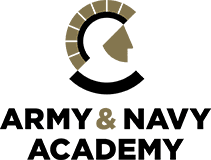Why are science, technology, engineering, and math important?

In the fast-evolving landscape of global economies, STEM (Science, Technology, Engineering, and Mathematics) education stands out as a crucial pillar for developing the innovators and leaders of tomorrow. Here’s why STEM is more than just an academic discipline—it’s a critical tool for future success.
What is STEM?
STEM education encompasses a broad range of subjects that are united by their focus on solving real-world problems through technology and scientific understanding. It involves a rigorous approach to learning with an emphasis on innovation and critical thinking. Some private schools offer diverse electives in addition to core academic courses.
The acronym STEM is becoming the dominant content descriptor for the present and future needs of our nation’s education system. Science, Technology, Engineering, and Mathematics are the topics all of today’s young people will need to embrace to some degree to be prepared to succeed in tomorrow’s world of work.
What do STEM Studies and STEM Subjects Entail?
STEM subjects include a wide array of disciplines from environmental science to advanced computing. These areas teach students to approach problems with a critical, analytical mindset and to employ technology effectively. The versatility of STEM subjects makes them fundamental for students looking to enter a variety of fields such as: aviation, engineering, medicine, and computer science. One boarding school geared for how boys learn even offers students a comprehensive aviation program, alongside an aviation club.
“Computer science (CS) is not about … how to use a word processor or create a spreadsheet. CS is about gaining computational thinking skills and a critical skill set that all students should have in the 21st Century workforce…” – U.S. Department of Education
What do STEM Courses and Classrooms Look Like?
Modern STEM classrooms are dynamic environments where theoretical learning meets practical application. They are equipped with the latest technology and resources, encouraging students to engage in hands-on activities, from coding robots to conducting chemical experiments. This active learning style helps to cement understanding and inspires a lifelong passion for discovery.
How do STEM Classes Prepare Students for the Future?
By integrating STEM education into the curriculum, schools are preparing students for the demands of the 21st-century workplace. STEM classes develop foundational skills like problem-solving, creativity, and analytical thinking—abilities that are essential in any career path, particularly those at the forefront of technological and scientific advancement.
“Stem education is the ultimate vessel for learning. It combines real-world issues, problem-based learning, technology, community partnerships, and an environment where failure is seen as an opportunity. The result is an education that prepares students with both the hard and soft skills that are needed in the 21st-century workforce.” – Juli Salzman, Teacher, We Go Public Parent Resources
STEM Prepares Students for High-Income Careers
As cited by the National Center on Educational Statistics, students with degrees in STEM subjects (science, technology, engineering and mathematics) are generally positioned for higher median earnings than those in non-STEM fields. Also, noteworthy is the fact that in recent Census data, the highest-paying college majors fall within STEM fields.
Why Consider a Military Junior Boarding School for STEM?
As we look at the schools that are making a significant impact in STEM, Army and Navy Academy stands out. This is an all-boys school for grades 7-12 in California.
Positioned at the intersection of tradition and innovation, the Academy offers a rigorous STEM curriculum designed to prepare cadets for leadership roles in a tech-driven future. The school’s commitment to providing a structured environment enhances the learning experience, ensuring that students not only understand STEM concepts but also apply them in leadership contexts.
For families and students interested in taking a deep dive into STEM studies within a disciplined and value-driven educational system, the Army and Navy Academy provides an ideal setting. Learn more about how our programs empower students to excel in STEM fields by contacting the Office of Admission or using our simple contact form.
